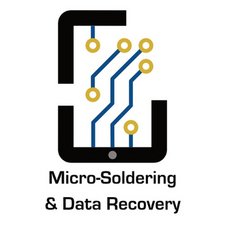@soros makes a good point. Troubleshooting logic boards, while not rocket science, still requires some basic understanding of electronics components. If you know what a capacitor or inductor does and why it does it, then you will be able to test it appropriately.
Now, to encourage you in your new venture, I would recommend you start with testing the main voltage lines (PP_BATT_VCC & PP_VCC_MAIN). First test them with no power to see if they are shorted to ground. If they are, you need to identify which component or IC is dragging it down. If they are not shorted then you need to start testing all the main voltage rails generated by the PMIC (U7) and see if any of those lines are shorted.
Once you power the device, check to see if you have the right voltages. Missing voltages (with no shorts) may be indicative of a defective PMIC. The easiest way to test a device is to connect a known-good battery, a known-good Lightning port and plug in a cable (preferably genuine Apple); it will activate the phone and you will see if it boots by whether iTunes recognizes it or not. You could also connect a screen when you need to test the backlight/LCD driver circuitry. You don't need to screw the board back in. If you have extra components (batteries, ports etc) you can just plug them together out of the housing. If you don't then put it back in the housing but you will have lots of variables to isolate, especially with water damaged phones.
Start probing and get back to us with your measurements and observations and we will give you additional guidance.
Here is something I usually post when repair techs ask about how to test a capacitor:
If you are going to be doing board level repairs as a business, I think you should be investing some time and effort to understand at least the basics of electronics. Once you understand what a resistor, capacitor or inductor (coil, choke, ferrite bead) does and how they behave, you will know how to test them and whether or not it can be shorted or removed. As I always say, electronics engineers put those specific components there for a reason so ideally you should always be replacing them with similarly spec'd components.
This is a good tutorial on how engineers deliver clean power to IC's. This is very relevant as the majority of the passives on an iDevice logic board are there for this specific reason. There are several articles in the series and they touch on capacitors and ferrite beads (filters). Another good source of materials is ElectronicTutorials. There are also some good youtube channels such as Afrotechmods, AddOhms and of course the EEVBlog.










 1
1 
 289
289  807
807
3 Comments
If you trying to solve this without schematics and electronics knowledge is like trying to cross a highway blindfolded.
Some things are a little bit too complicated to explain on a forum in writing.
by Oros
Yea I have the schematics, but just need some guidance on where to begin looking for shorts
by R Chaoudhry (tblazers)
bump for help , will probably order another lightening connector
by R Chaoudhry (tblazers)